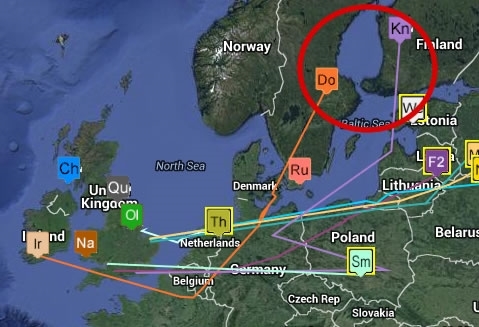By Chris Heward, Wetland Research Assistant
Knepp is a woodcock with a bit of experience when it comes to migration. His current spring migration is the third we’ve tracked with him since he joined the Woodcock Watch study. Each time he’s returned to the same site in Finland.

It looks like he’s already back at his breeding grounds for 2016. He departed Sussex on the 19th March, arriving at his current location by the 3rd April. That’s a journey time of just two weeks for a distance of around 2500 km.
It’d be interesting to probe the existing Woodcock Watch data to see if it’s typical for more experienced woodcock to make their migrations at a quicker pace.
Doc, one of our Irish birds, also appears to be closing in on the same Swedish breeding site he visited last year. This is in contrast to our new bird in Lincolnshire, Thorn, who has only just left the UK within the last few days.
It’s easy to imagine that there may be a distinct reproductive advantage to reaching the breeding grounds sooner rather than later. Generally with migrant birds the first males to return get the best territories.
Woodcock are not territorial, so do not compete with one another in this way – but certainly the earlier males are arriving the more females they will have to pick from. The only risk is returning to Finland or Sweden too soon and finding that there is still snow on the ground.